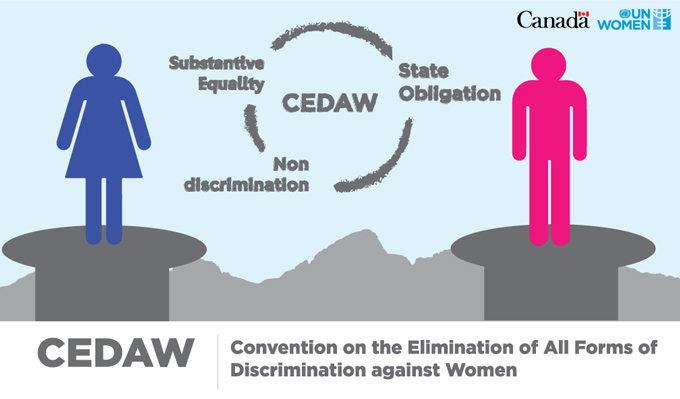Convention on the Elimination of all Forms of Discrimination Against Women (CEDAW)

This topic of “Convention on the Elimination of all Forms of Discrimination Against Women (CEDAW)” is important from the perspective of the UPSC IAS Examination, which falls under General Studies Portion.
Introduction
- The Convention on the Elimination of all Forms of Discrimination Against Women (CEDAW) is a United Nations treaty, adopted in 1979 and implemented on 3rd September 1981.
- It’s described as an international bill of rights for women, ratified by 189 states.
-
India ratified CEDAW on 9th July, 1993 committing a national agenda for the State Parties to end discrimination against women in India.
Structure of CEDAW
- CEDAW is divided into six parts and includes 30 articles:
Part I (Articles 1–6): Non-discrimination, Sex Stereotypes, and Sex Trafficking
- Article 1: Defines discrimination against women
- Articles 2-6: Mandate steps to eliminate discrimination and protect women’s rights
Part II (Articles 7–9): Women’s Rights in Public Sphere
- Emphasizes political life, representation, and rights to nationality
Part III (Articles 10–14): Economic and Social Rights of Women
- Focuses on education, employment, and health, with special protections for rural women
Part IV (Articles 15-16): Equality in Marriage and Family Life
- Stipulates equality before the law
Part V (Articles 17–22): Committee on Elimination of Discrimination Against Women
- Establishes the committee and states’ reporting procedure
Part VI (Articles 23–30): Effects of the Convention
- Covers effects on other treaties, states’ commitment, and convention administration
Articles 25–30: Administration of CEDAW
- Detail general administrative procedures regarding enforcement, ratification, and reservations
CEDAW, UNSCR 1325, and 1820
- CEDAW, UN Security Council Resolutions 1325 and 1820, intersect to enhance implementation and impact.
- Resolutions 1325 and 1820 clarify the scope of CEDAW in conflict situations.
- CEDAW provides strategic guidance on commitments outlined in these Resolutions.
- CEDAW is expected to be incorporated into national laws as the highest standard for women’s rights.
Members and Ratification
- Six UN member states have not ratified or acceded to the convention: Iran, Palau, Somalia, Sudan, Tonga, and the United States.
- The UN non-member state that has not acceded to the convention is the Holy See/Vatican City.
- The Republic of China (Taiwan) ratified the treaty in its legislature in 2007, but is unrecognized by the UN.
- South Sudan is the latest state to have acceded the convention, on 30th April 2015.
- Multiple unsuccessful ratification attempts in the United States. Over 40 cities and local governments have adopted CEDAW ordinances or resolutions.
- India ratified CEDAW on 9th July, 1993
Committee on the Elimination of Discrimination Against Women (CEDAW Committee)
- CEDAW Committee oversees the Convention and ensures adherence to the rules.
- The formation and functioning of this committee were outlined in Article 17 of the CEDAW.
- The committee has evolved over time due to an increased focus on women’s rights issues.

